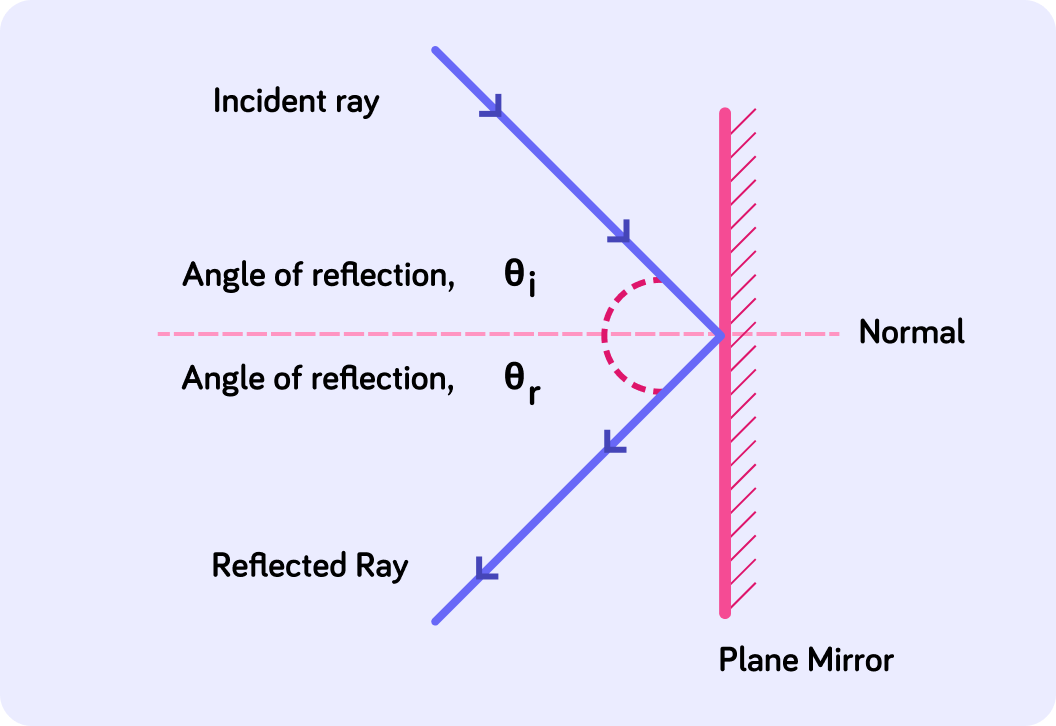YOU ARE LEARNING:
Ray Diagrams of Reflection

Ray Diagrams of Reflection
Drawing ray diagrams for light reflecting off a mirror allow us to measure the angles of incidence/reflection against the normal to the surface.
In this lesson, we will be looking at how you can schematically draw waves that are being reflected.
Can you guess what the definition of a ray is?

What do you think we call the ray that hits the surface boundary in a reflection diagram?

What do we call the ray that is reflected off the surface boundary in a reflection diagram?

Can you recall the law of reflection?

The angle of incidence, θi , is the angle between the incident ray and the...?


The angle of reflection, θr, is the angle between the reflected ray and the...?


The hatched vertical line on the right represents the plane mirror.
The plane mirror is a perfectly flat surface. If it were a rough surface, the rays would be reflected in lots of different directions.

Which is larger, the angle of incidence θi or the angle of reflectionθr ?

A ray hits a mirror at 90o. How is it reflected? Select all the correct answers below.

You can select multiple answers
When Sarah looks down at the sea, she sees her reflection, but it is not very clear. Can you guess why this is?

To finish, lets recap the steps in drawing a ray diagram:
- Draw the plane mirror.
- Draw the incident ray.
- Draw the normal, perpendicular to where the incident ray hits the mirror.
- Draw the reflected ray, where θr=θi
